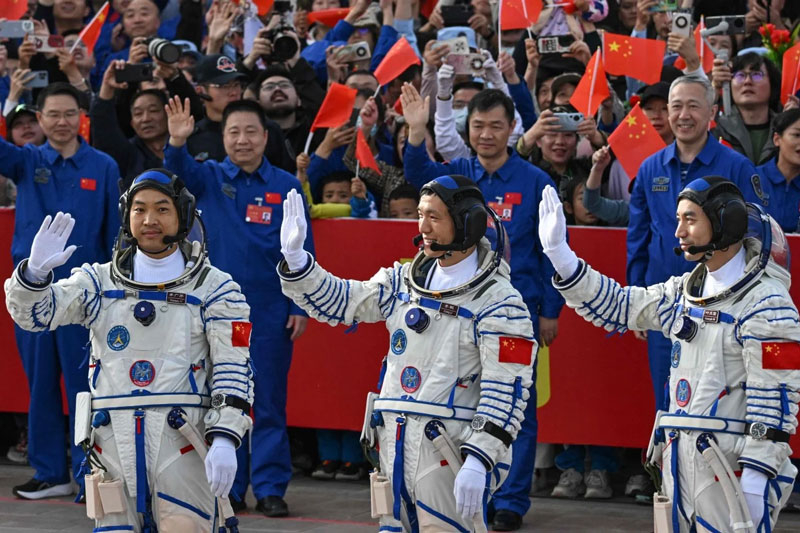On October 15, 2024, China’s leading space and science agencies released a step-by-step plan to transform the country into a world leader in space. The plan provides for three stages of implementation, with implementation planned by 2050. By this time, China intends to be far ahead of the United States and the whole world on many issues in the development of space science and technology.

Image source: AFP
The authors of the plan “National Space Science Development Program” are representatives of the National Aerospace Administration of China (CNSA), the China Manned Space Flight Agency (CMSA) and the Chinese Academy of Sciences (CAS). The plan identifies 17 priority areas of development, including the search for habitable planets and the study of quantum mechanics. The country’s progress in space exploration will be divided into three stages: from now to 2027, from 2028 to 2035 and from 2036 to 2050.
Five to eight new missions are planned to be added to current projects through 2027, in line with China’s long-term space goals. During this period, China will strive to gain a foothold on the Moon with automatic probes and prepare a site for a future station. The creation of a base for a long-term presence on the Moon will be accelerated in the second stage. During the second stage, it is planned to implement 15 missions aimed at “strengthening the power” of China in space.
In the third phase, China intends to launch 30 scientific space missions to surpass other powers and become a leading country in space science and research.
Future missions will include the search for habitable planets and extraterrestrial life, studying the origin and evolution of the universe, uncovering the nature of gravity, and studying quantum mechanics and general relativity.
«Our country’s space technology has made major breakthroughs and is at the forefront of global development in some areas. Space solutions represented by communications, navigation and remote sensing satellites are on the rise, playing an important role in serving the national economy and social development, said Ding Chibiao, vice president of CAS, at a press briefing. “However, in comparison, the number of our scientific space satellites is still relatively small, and the major achievements achieved are not enough, and there is still a certain gap compared with the world’s aerospace powers.”
China’s undoubted success was the delivery of lunar soil from the far side of the satellite. But Chinese science looks further – to Mars, Jupiter. Scientists are calling for the search for worlds suitable for humans far from Earth – in our system and on exoplanets. Many space instruments are planned to clarify the nature of gravity, dark matter, dark energy, test the provisions of the theory of relativity and move towards the origins of the Universe – to the Big Bang. It won’t be boring, and a new instrument is always a waterfall of discoveries.